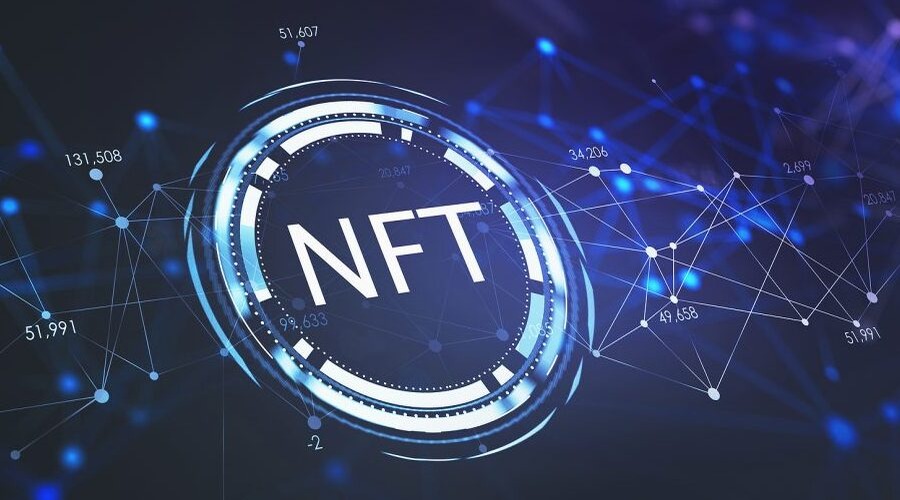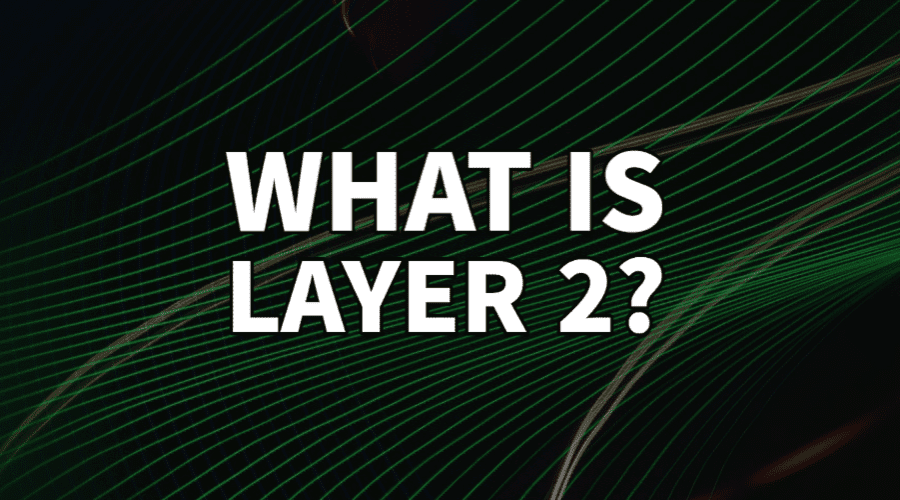
NFTs on Layer 2: Scaling Digital Collectibles and Gaming
- Cary
- May 29, 2023
- NFT
- Blockchain, Layer 2, NFT
- 0 Comments
In recent years, non-fungible tokens (NFTs) have taken the world by storm, revolutionizing the way we think about digital ownership and collectibles. From unique artworks and virtual real estate to in-game items and sports memorabilia, NFTs have gained significant popularity and have become a hot topic in the crypto space. However, as the demand for NFTs continues to surge, scalability has emerged as a major challenge for the ecosystem. This article explores how Layer 2 scaling solutions can address this issue and open up new possibilities for the NFT market and gaming industry.
Introduction to NFTs and their popularity
NFTs are digital assets that represent ownership or proof of authenticity of a unique item or piece of content. Unlike cryptocurrencies such as Bitcoin or Ethereum, which are fungible and can be exchanged on a one-to-one basis, NFTs are indivisible and cannot be exchanged on a like-for-like basis. This uniqueness and scarcity make NFTs highly sought after by collectors and enthusiasts alike.
In recent years, we have witnessed several groundbreaking NFT sales, including the famous Beeple artwork sold for millions of dollars and the NBA Top Shot platform, where users can buy and trade virtual basketball highlight clips. These examples highlight the immense potential of NFTs to disrupt traditional markets and create new opportunities for creators and collectors.
The need for scalability in the NFT ecosystem
As NFTs gain mainstream attention, the underlying blockchain infrastructure struggles to keep up with the growing demand. The Ethereum network, which is the most popular blockchain for NFTs, has experienced significant congestion and high transaction fees due to the surge in NFT activity. This congestion not only hampers the user experience but also limits the potential for broader adoption of NFTs.
What is Layer 2 Scaling?

Layer 2 scaling solutions aim to address the scalability issues faced by blockchain networks like Ethereum. These solutions work by moving some of the computational work off the main blockchain, allowing for faster and cheaper transactions. Layer 2 solutions build on top of the existing blockchain infrastructure and provide a more efficient way of processing transactions while maintaining the security and decentralization of the underlying network.
Some popular Layer 2 scaling solutions for NFTs include sidechains, state channels, and rollups. Sidechains are independent blockchains that can process transactions off-chain and settle them on the main chain. State channels enable users to conduct off-chain transactions while periodically updating the main chain with the final outcome. Rollups aggregate multiple transactions into a single transaction and submit them to the main chain for verification.
Benefits of using Layer 2 for NFTs
- Improved scalability and reduced transaction fees: By offloading a portion of the transactional workload to Layer 2 solutions, the scalability of the NFT ecosystem can be vastly improved. This means that more transactions can be processed in a shorter amount of time, resulting in a smoother user experience. Additionally, Layer 2 solutions often come with significantly reduced transaction fees, making NFTs more accessible to a broader audience.
- Enhanced user experience and increased adoption: Layer 2 scaling can greatly enhance the user experience for NFT enthusiasts and collectors. Faster transaction confirmation times and lower fees lead to a seamless experience when buying, selling, or trading NFTs. This improved usability can attract new users to the NFT space and drive increased adoption of digital collectibles.
- Scalable infrastructure for high-demand applications: These solutions provide a scalable infrastructure that can handle high-demand applications such as gaming, virtual worlds, and digital art platforms. By processing transactions off-chain or aggregating them into fewer on-chain transactions, Layer 2 solutions enable these applications to operate efficiently and accommodate large user bases without compromising performance.
- Reduced environmental impact: With the rising popularity of NFTs, concerns about the environmental impact of blockchain networks have also emerged. Layer 2 scaling solutions, by reducing the transactional workload on the main chain, can contribute to a more energy-efficient NFT ecosystem. This can help address sustainability concerns and make NFTs a more environmentally friendly option for digital ownership and collectibles.
- Support for complex smart contract functionality: These solutions can support complex smart contract functionality while reducing the computational burden on the main chain. This enables developers to create sophisticated NFT applications with advanced features, such as decentralized finance (DeFi) integrations, interactive gaming mechanics, and dynamic collectible attributes. Layer 2 solutions empower developers to unleash the full potential of NFTs without being limited by scalability constraints.
Challenges and considerations with Layer 2 scaling for NFTs
- Security and trust issues: Layer 2 solutions introduce new security considerations. As some of the transactional activity moves off-chain, users must trust the Layer 2 solution provider to secure their assets and ensure the integrity of the system. Smart contract vulnerabilities and potential attacks on Layer 2 solutions can also pose security risks that need to be carefully addressed. Robust security measures and audits are necessary to maintain trust and protect user assets.
- Interoperability and fragmentation concerns: The NFT ecosystem consists of various platforms and marketplaces, each with its own set of standards and protocols. The implementation of Layer 2 solutions introduces additional complexity, potentially leading to fragmentation and interoperability challenges. Standardization efforts and compatibility between different Layer 2 solutions will be crucial for the seamless transfer of NFTs across platforms and the overall growth of the ecosystem.
- Liquidity and asset portability: Moving NFTs between Layer 2 solutions and the main chain can present liquidity challenges. Users may face difficulties in trading or transferring NFTs between different Layer 2 environments or bringing them back to the main chain. Ensuring smooth liquidity and asset portability across layers will be essential for a thriving NFT market.
- User experience and education: While Layer 2 solutions aim to enhance user experiences, there may be a learning curve for users unfamiliar with the technology. Educating users about the benefits, processes, and potential risks associated with Layer 2 scaling is crucial to ensure a smooth transition and widespread adoption. User-friendly interfaces, documentation, and support channels can help address these challenges.
- Long-term sustainability and evolution: It scaling is an evolving field, with ongoing research and development. Ensuring the long-term sustainability and evolution of Layer 2 solutions requires continuous innovation, upgrades, and community engagement. Collaboration between developers, users, and industry stakeholders is vital to drive the progress of Layer 2 scaling solutions and address emerging challenges effectively.
Case studies of successful NFT projects on Layer 2 solutions
Several notable NFT platforms have already adopted Layer 2 scaling solutions to overcome the challenges of scalability. These platforms have witnessed significant improvements in performance, cost efficiency, and user experience.
One such example is Aavegotchi, a digital collectible project that combines NFTs with decentralized finance (DeFi) elements. Aavegotchi leverages the Polygon network, a Layer 2 scaling solution, to offer faster and cheaper transactions for its users. This has allowed Aavegotchi to create a thriving community of collectors and gamers, attracting both experienced NFT enthusiasts and newcomers to the space.
Another successful project utilizing Layer 2 scaling is Immutable X, a platform for trading and collecting NFTs. Built on top of Ethereum, Immutable X uses a rollup solution to achieve high throughput and instant transaction finality. By providing a seamless user experience and reducing transaction costs, Immutable X has gained popularity among NFT collectors and game developers.
Future prospects and developments in Layer 2 scaling for NFTs
The future of Layer 2 scaling for NFTs looks promising, with ongoing research and development in the field. Several solutions are currently being explored, including optimistic rollups, zero-knowledge rollups, and more advanced sidechains. These upcoming advancements hold the potential to further enhance scalability, security, and interoperability in the NFT ecosystem.
As Layer 2 solutions continue to mature, we can expect to see a wider range of applications and use cases for NFTs. From gaming and virtual worlds to digital art and intellectual property, Layer 2 scaling opens up exciting possibilities for creators, collectors, and developers alike.
Conclusion
The rise of NFTs has brought forth new opportunities and challenges for the digital collectibles and gaming industries. Scalability has emerged as a pressing concern, limiting the potential of NFTs to reach a broader audience. Layer 2 scaling solutions offer a promising path forward, providing improved scalability, reduced transaction fees, and enhanced user experiences. While challenges such as security and interoperability persist, ongoing developments in the field hold the promise of a more scalable and accessible NFT ecosystem.
FAQ
What are NFTs?
NFTs, or non-fungible tokens, are digital assets that represent ownership or proof of authenticity of unique items or content. They have gained popularity in various domains, including art, collectibles, and gaming.
Why do NFTs need scalability?
As the demand for NFTs increases, the underlying blockchain infrastructure struggles to handle the growing transaction volume, leading to congestion and high fees. Scalability is crucial to ensure a smooth user experience and foster broader adoption.
How do Layer 2 solutions address scalability?
Layer 2 solutions move some of the transactional workload off the main blockchain, enabling faster and cheaper transactions. Examples include sidechains, state channels, and rollups.
Are there any security risks associated with Layer 2 scaling for NFTs?
Layer 2 solutions introduce additional security considerations, such as trust in the solution provider and potential smart contract vulnerabilities. Proper security measures and audits are necessary to mitigate these risks.
How can Layer 2 solutions benefit the gaming industry?
Layer 2 scaling solutions can enhance the gaming experience by enabling faster and cheaper transactions for in-game assets and collectibles. This improves user engagement and opens up new opportunities for game developers.

